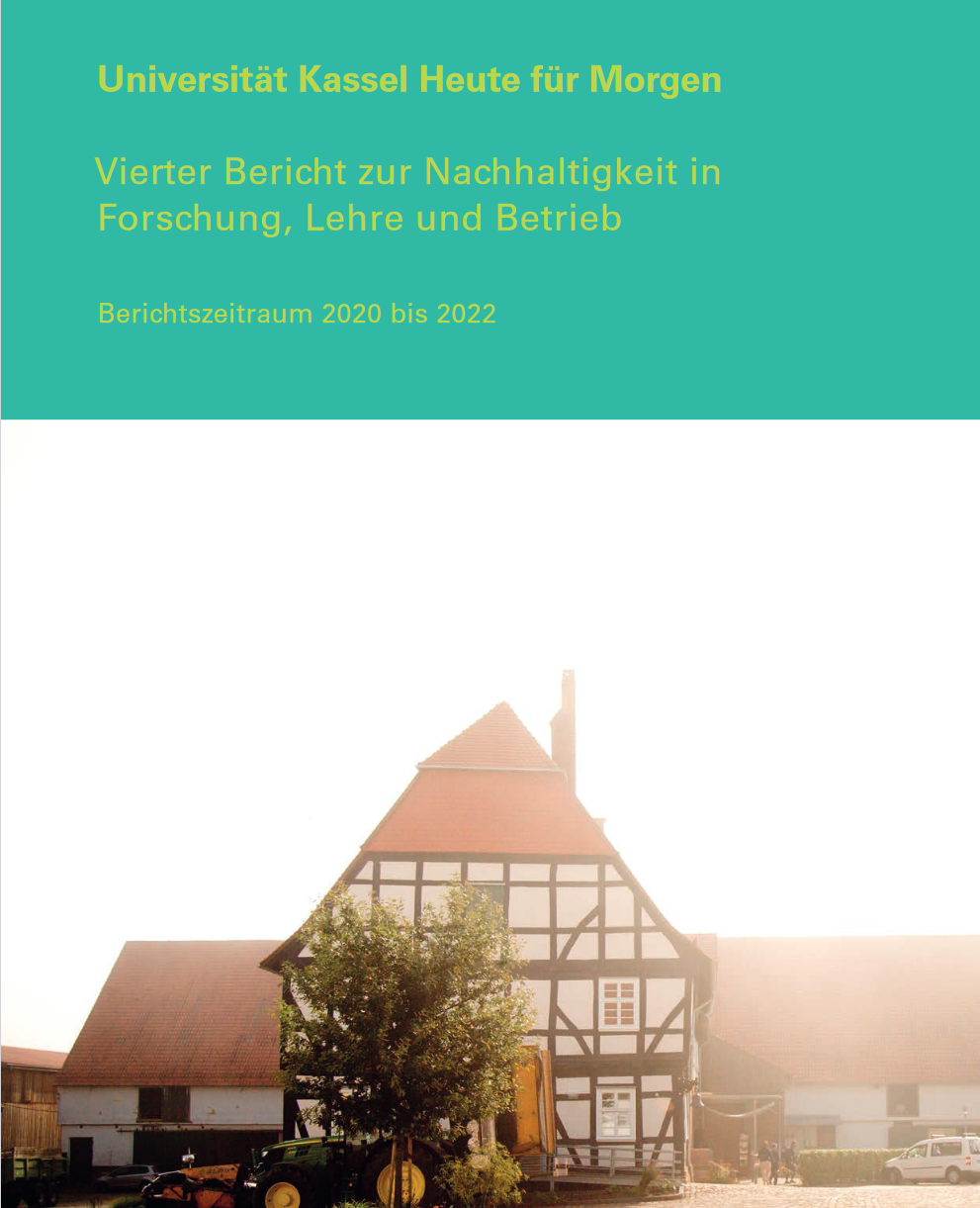Facts & figures on sustainability
The content on this page was translated automatically.
Environmental chronicle
Since its foundation, the University of Kassel has focused on social and environmental disciplines. As early as 1975, Ernst Ulrich von Weizsäcker gave the university a sustainability profile at a time when the term was not even in use. Even 50 years later, the University of Kassel still benefits from its interdisciplinary orientation and the strong networking of interdisciplinary projects.

Building area
In 2022, the university will have a building stock of 110 buildings with a building area of 357,960 m² to be managed, spread across nine university locations.
The development in 2020 and 2021 of lower electricity consumption on the one hand and higher heat consumption on the other can be explained as a result of the coronavirus measures: The coronavirus pandemic has restricted face-to-face teaching and on-site work.
The specific electricity consumption per m² NRF was gradually reduced by 2019. In the 2021 and 2022 reporting period, this resulted in a figure of 56 kWh per m². In 2022, the specific energy consumption was 781 kWh/person and therefore slightly below the 2019 figure (793 kWh/person).
Key figures for heat
The specific heat consumption shows a typical trend for the coronavirus years. The energy-saving measures taken in 2022 led to a reduction in consumption of around 13% compared to the previous year. In relation to the heating period in fall 2022, the targets for saving at least 15% heating energy were achieved and even exceeded.
CO2 emissions from the use of heat and electricity
From 2020 to 2022, the CO2 emissions resulting from building operations are at a significantly lower level compared to the years before 2019. In 2020 and 2021, the university's own combined heat and power plant was operated at less than 50% capacity and the specific CO2 emission factor for district heating has improved significantly from 166.3 g/kWh in 2019 and to 133 g/kWh in 2020 and 2021. For 2022, the CO2 emission factor was reduced again to 116 g/kWh.
CO2 emissions
In 2019, specific CO2 emissions still amounted to 21 kg per m² NRF; in 2022, this figure fell to 13 kg per m². Specific CO2 emissions per person are also declining. While CO2 emissions in 2019 were still 264 kg per person, in 2022 they were only 179 kg per person.
Waste generation
With its waste management concept, the university has installed a waste management system that is optimized from an ecological, economic and functional point of view. It was not possible to carry out a meaningful evaluation during the reporting period of the coronavirus pandemic.
By 2025, the University of Kassel aims to stabilize the total amount of waste as well as the specific amount per person and year at least at the same level as before 2019 and, if possible, reduce it further.
Water consumption
In 2019, before the start of the coronavirus pandemic, water consumption amounted to 101,935 m³. Water consumption after the coronavirus years is similar to the years before the pandemic.
In the coming years, the university will continue and intensify its measures to raise awareness of user behavior and reduce water consumption in order to use water more sparingly. For the coming reporting period, it aims to develop strategies and measures for rainwater management and to unseal open spaces wherever possible.



















